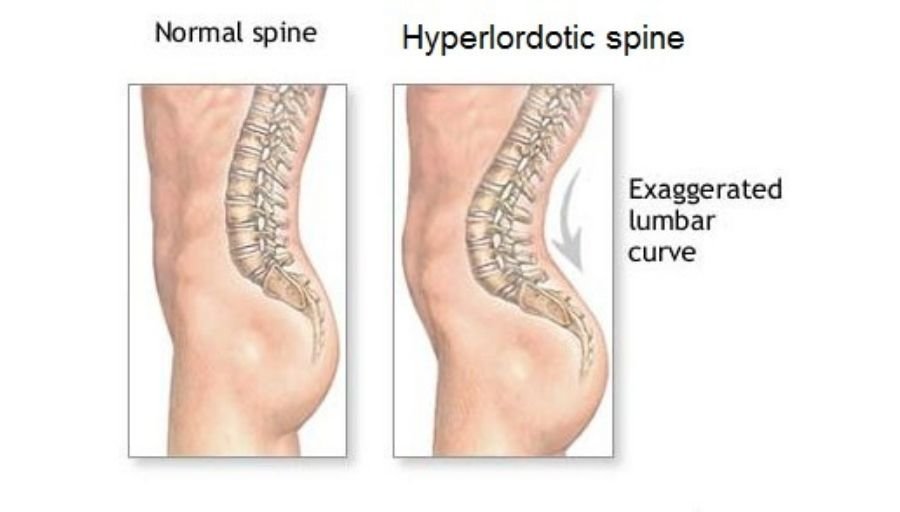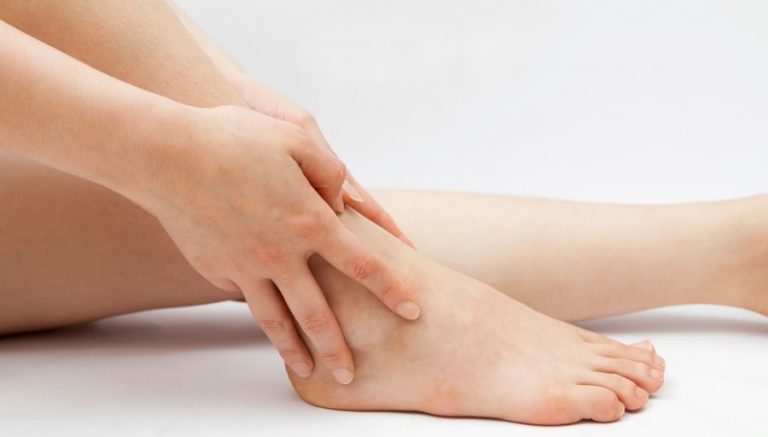Arched Back (Hyperlordosis) – Causes & How To Fix It (2023)
Hyperlordosis is the medical term for an arched back. This happens when the lower back is curved too much, resulting in pain due to a herniated disc or other spinal injury. Hyperlordosis is a long-term result of poor posture, obesity, spinal conditions, and lack of exercise.
What Causes Hyperlordosis (Arched Back)?

When the spine arches, the muscles in the back and core are additionally strained. Your muscles get out of balance and become tense and weak.
This can affect gait and balance. This, in turn, can contribute to back pain.
You can easily see hyperlordosis (arched back) when you stand with your back against a wall. Keep your legs shoulder-width apart and your heels about 2 cm from the wall.
You could have hyperlordosis if there is more than a hand distance between the wall and the back.
It is characterized as an exaggerated curvature in the lower back, causing your stomach to be pushed forward and your buttocks to be thrust outwards. From your profile view, the lower back region may be a prominent ‘C’ shape.
In pregnant women, a study in 2007 showed that hyperlordosis is a way for the female spine to adjust to the extra weight of a baby.
It is also associated with stress fractures of the vertebrae. Poor posture is also a common cause of this condition.
Other factors that may contribute to lordosis include:
- obesity
- pregnancy
- weak core muscles
- wearing high heels for long periods
- spinal injuries
- intervertebral disc problems
- diseases such as rickets and osteoporosis
- neuromuscular diseases such as cerebral palsy
- sedentary lifestyle
- lack of exercise
Hyperlordosis (Arched Back) Diagnosis
If hyperlordosis is related to a structural problem of the spine, a referral to a physiotherapist or back specialist may be necessary.
A doctor may begin by prescribing painkillers and anti-inflammatory drugs to relieve the painful symptoms of the condition. Long-term treatment depends on the cause of the arched back.
Diagnosing hyperlordosis (arched back) can be challenging because the natural curvature of the lower spine in the lumbar spine varies widely per person.
X-rays can help measure spine curvature such as magnetic resonance imaging (MRI) or computed tomography (CT).
How To Fix An Arched Back
Many exercises are available depending on age and fitness to fix an arched back. Your doctor may refer you to a physiotherapist.
They can give you a series of exercises you can do on your own to improve your posture. Yoga or chair yoga can also be a good choice. The most important thing is to develop a training routine to stick to.
If obesity is a factor, doctors are likely to develop a weight-loss plan. This can include physical therapy, exercises, and stretching to strengthen the core muscles and improve posture.
Underneath, you can find exercises to fix an arched back:
Exercise 1 For Arched Back | Sit-Ups
- Lay on a flat surface with your back to the ground.
- Bend your knees parallel to the floor.
- Keep feet flat on the floor.
- Cross your arms on your chest and raise your upper body to your thighs.
- Slowly lower your body to the ground.
- Repeat this exercise to strengthen your abdominals and back.

Exercise 2 For Arched Back | The Superman
- Lay flat on an even floor surface on your stomach.
- Stretch your arms out in front of you.
- At the same time, raise your legs, arms, and chest off of the floor.
- Hold this pose for a few seconds (increase with practice).
- Release back to the ground.
- Repeat this exercise to strengthen your back.

Exercise 3 For Arched Back | Opposite Arm And Leg Raises
- Kneel on the floor on all fours with palms flat.
- Keep your hands directly under your shoulders and your hips above your knees.
- At the same time, lift one arm with the opposite leg parallel to your spine and the floor.
- Repeat the other side.

Exercise 4 For Arched Back | Squats
- Stand with your feet about a shoulder-width apart.
- Lower your body into a seating position until your thighs are parallel to the floor.
- Avoid lowering your bottom lower than your knees (keep at a right angle).
- Keep your feet flat on the floor.
- Raise your body and repeat.

Exercise 5 For Arched Back | Reverse Plank
- Raise your body at a 45-degree angle.
- Hold for a few seconds.
- Your arms can extend with your palms facing inward or raise yourself on your elbows.
- Looking up to the sky, tighten your bottom muscles, back, and abdominals to support yourself.
- Gently lower yourself and repeat to strengthen your back and abdominal muscles.

Exercise 6 For Arched Back | Regular Plank
This can be done on your elbows or with your arms extended.
- Keep your arms parallel with your shoulders.
- Keep legs a shoulder width apart.
- Keep your back straight.
- Hold your plank for as long as possible while tightening your abdominal, back, and gluteal muscles.

Exercise 7 For Arched Back | Bridge
- Lie on your back, keep your feet and knees a hip distance apart.
- Stretch your arms out beside you with palms flat and feet flat.
- Tightening your gluteal and abdominal muscles raises your hips.
- Aim to keep your spine straight.
- Hold the position for as long as you like, and gently lower to the ground.
- This exercise is excellent for strengthening your lower back and gluteal muscles.

How To Prevent An Arched Back
You should also know how to maintain a good posture when sitting, standing, and doing activities.
A simple postural exercise that does not require equipment is moving your shoulders away from your ears while pushing your back straight.
You can also stretch your arms to the sides at shoulder height and roll them up in small circles. Speak to your physical therapist for more exercises within your abilities.






